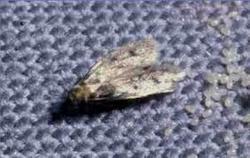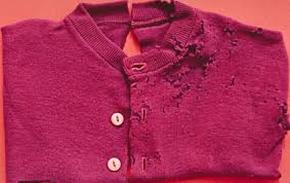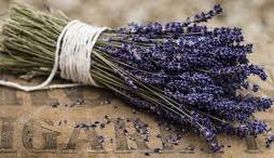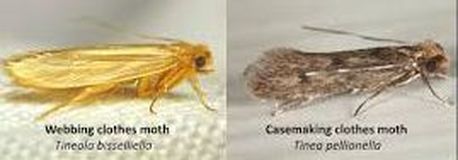
It’s moth season and the best, safest place for them to nest is your closet. That’s right, nest. Moths don’t actually ‘eat’ your animal-based garments – wool, cashmere, silk and fur – they lay their eggs within your clothes ensuring their larvae have an ample food source when they hatch. Babies get hungry!

Moth larvae can do some real damage to your favorite pieces. Holes are rarely repairable without a weaver and that can run you almost as much as your favorite sweater cost in the first place.
Good news is that there are only two types of moths, out of 15,000 species, whose larvae feed on animal fibers. Pretty good odds, but if you just happen to luck out with one that does, Shirley’s Designs & Alterations has a few tips to help you through a hole-free summer. First, here's what the little guys look like:
Good news is that there are only two types of moths, out of 15,000 species, whose larvae feed on animal fibers. Pretty good odds, but if you just happen to luck out with one that does, Shirley’s Designs & Alterations has a few tips to help you through a hole-free summer. First, here's what the little guys look like:
Best way to ward off the pesky pests without smelling up your wardrobe with toxic pesticides naphthalene or dichlorobenzene (chemical names for mothballs and thought to be carcinogenic) or camphor (equally bad for your health):

- Keep your closet very clean – vacuum frequently including the walls and shelves
- Clean your animal-based garments – wool, cashmere, silk, fur – after each season and store them in clean, sealed cotton garment bags or air-tight containers (PLEASE avoid using plastics as it traps airborne toxins that will discolor your fine fabrics)
- Keep dried lavender adjacent to your animal-based garments
Already infested?
There is one way to totally moth-proof your wardrobe – the freezer. Something to think about for those Shirley’s Designs & Alterations customers thinking of a kitchen remodel this summer….
- Take your animal-based garments to the dry-cleaner immediately
- Wash the rest of your garments - including cottons as larvae are known to wander - in hot water at least 120⁰ F
- Vacuum your closet, including the shelves and floors and spread dried lavender around
- Find a good weaver…
There is one way to totally moth-proof your wardrobe – the freezer. Something to think about for those Shirley’s Designs & Alterations customers thinking of a kitchen remodel this summer….

